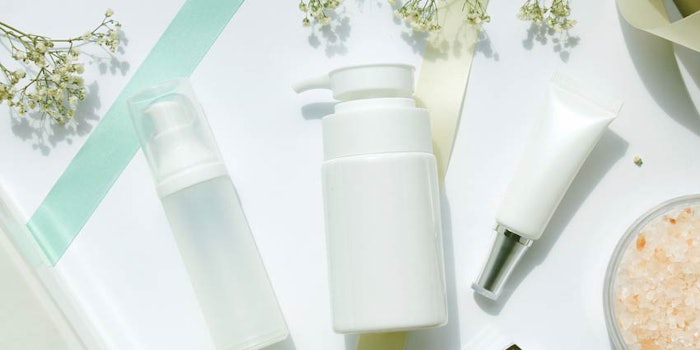
The European Union's (EU's) Scientific Committee on Consumer Safety (SCCS) published its opinion of salicylic acid on Dec. 21, 2018. Findings support its use as a preservative and cosmetic ingredient, within certain limits. Its approval for use in anti-acne products, however, requires additional exposure information.
Salicylic Acid
According to the SCCS, salicylic acid (CAS 69-72-7) and its salts—calcium, magnesium, MEA, sodium, potassium and TEA salicylates—are listed in Annex V of the EC Cosmetic Regulation No. 1223/20091 as preservative for cosmetic products at levels up to a maximum of 0.5% (acid); with the exception of products for children under three years of age (except shampoos).
Salicylic acid also is listed in Annex III of the Cosmetics Regulation for use up to a maximum of 3.0% in rinse-off hair products and 2.0% in other products. Applicable restrictions include: products for children under three years of age (except shampoos); and for purposes other than inhibiting the development of microorganisms in products; this latter purpose must be apparent from the presentation of the product.
Background and Impetus for Review
The EU Scientific Committee on Cosmetics and Non-food Products (SCCNFP) published an opinion on the safety of salicylic acid in June 2002 (SCCNFP/0522/01), which was adopted by the European Chemicals Agency's (ECHA's) Risk Assessment Committee (RAC). This opinion proposed the classification of salicylic acid as a CMR2 under Regulation (EC) No. 1272/2008. Said classification did cover the salts of salicylic acid.
Per this classification, the Cosmetics Regulation states that a substance classified in category 2 may be used in cosmetic products where the substance has been evaluated by the SCCS and found safe for use in cosmetic products.
To this end, the Commission adopted the necessary measures in accordance with the regulatory procedure, and in December 2017, Cosmetics Europe submitted a safety dossier on salicylic acid intended to demonstrate the safety of the ingredient for its current uses and restrictions. From this, the SCCS responded with its opinion.
SCCS Opinion
Preservative: In light of the data provided, the SCCS considers salicylic acid (CAS 69-72-7) safe when used as preservative at a concentration of 0.5% in cosmetic products, considering current restrictions in place. This opinion is not applicable to oral care products such as toothpaste and mouthwash, with the exception of lipsticks. Sprayable products that could expose consumers via lung inhalation also are excluded. Further, the provided information shows that salicylic acid is an eye irritant with the potential to cause serious damage to the eye.
Cosmetic ingredient: Based on the data provided and available literature, the SCCS considers salicylic acid (CAS 69-72-7) safe when used for purposes other than as a preservative at a concentration of up to 3.0% for cosmetic rinse-off hair products, and up to 2.0% for other products, considering current restrictions in place.
However, in body lotion, eye shadow, mascara, eyeliner, lipstick and roll-on deodorant applications, salicylic acid is considered safe up to 0.5% only as preservative. This opinion, again, is not applicable to oral products such as toothpaste and mouthwash. Sprayable products that could exposure consumers via lung inhalation also are excluded.
Anti-acne and other applications: Salicylic acid also is used in pharmaceutical formulations such as anti-acne products, and as a preservative or biocide in food and other consumer products. Since no specific exposure data was provided to the SCCS to assess exposure following these non-cosmetic uses, it was not possible to include them in the aggregated exposure scenarios. Therefore, the actual total exposure of the consumer may be higher than exposure from cosmetic products alone.
The SCCS notes the conclusions of this opinion refer only to salicylic acid and should not be applied to other salicylates or salicylic acid salts.










